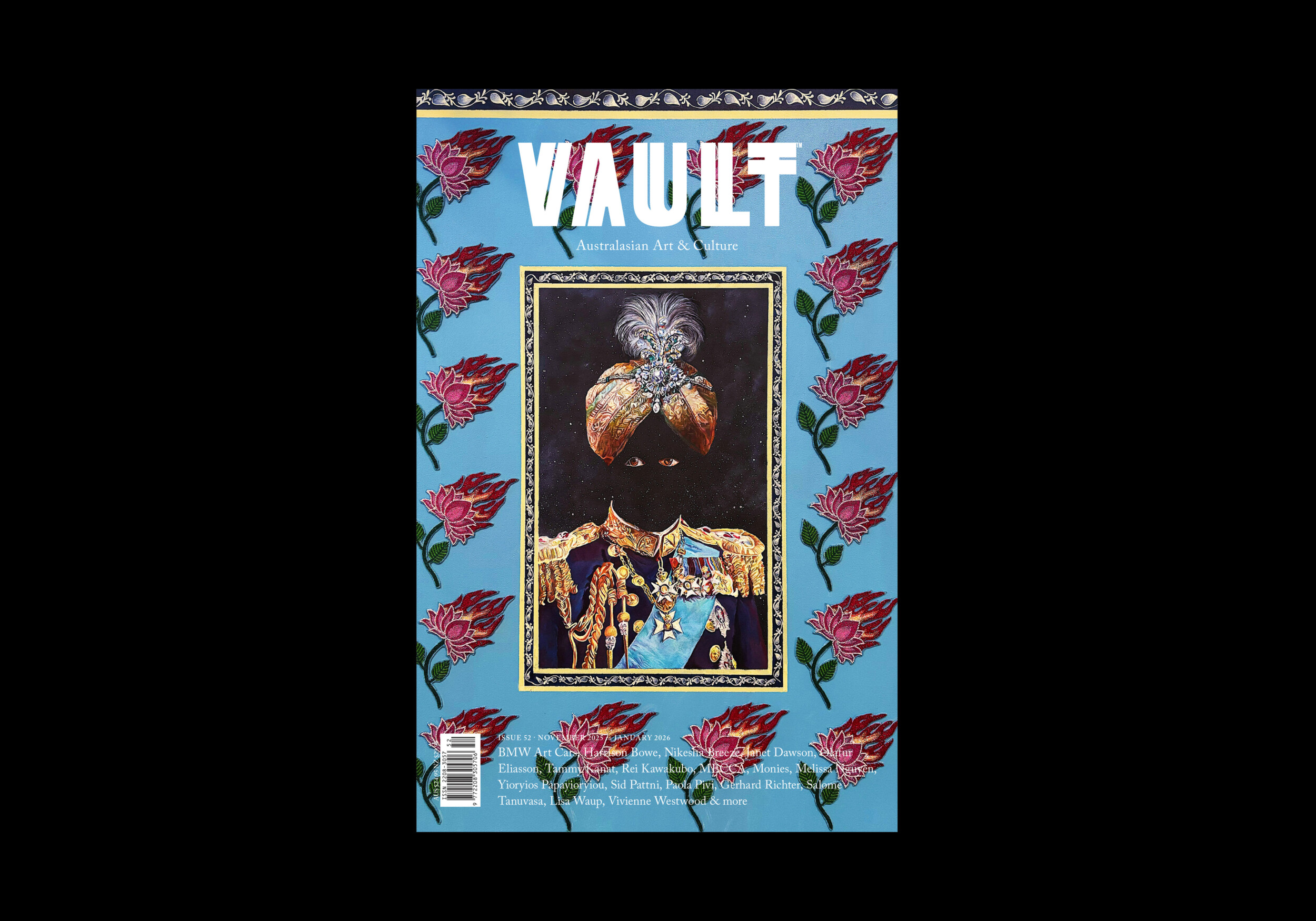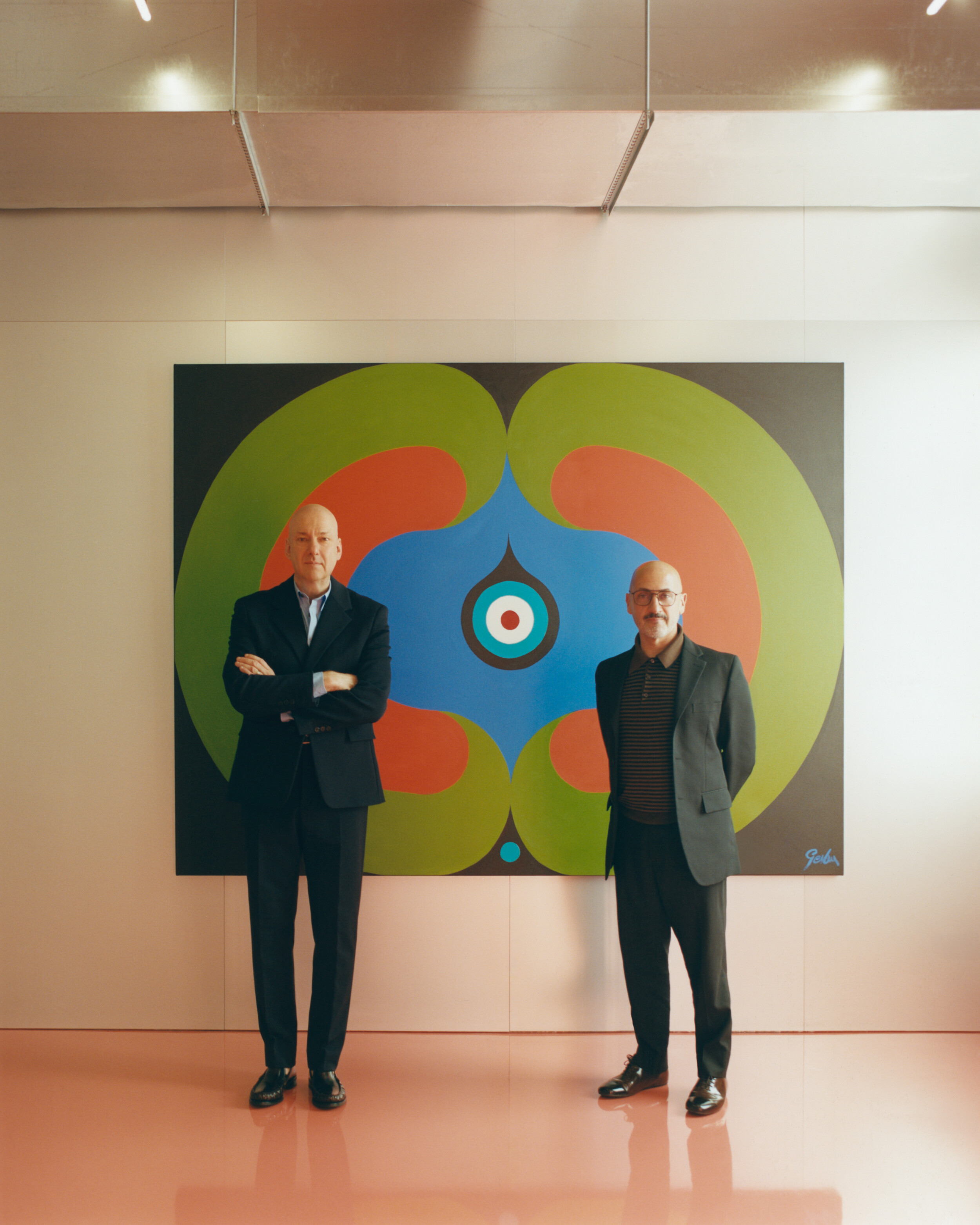19.11.2025Press
Studio Ongarato featured in VAULT Issue 52
In this collector profile, Director Ronnen Goren explores the studio’s enduring relationship with artists and cultural institutions across three decades. Through meaningful collaborations, the collection emerges as a rhizome of connections, reflecting the evolving cultural landscape of which the studio has been part.

Jarrod Haberfield: From the beginning, when you worked from the stockroom of the great gallerist Karyn Lovegrove, culture and the arts seem to have been central to Studio Ongarato. Do you recall a deliberate focus on art and artists when the studio began, or has that association emerged organically?
Ronnen Goren: Our engagement with culture and the role it plays in shaping our creative output has been fundamental since the beginning. Relationships with artists have always been integral, not only as part of our practice, but as a commitment to our studio culture, our people, and the way we see the world. In the early days, this naturally reflected our client base, which encompassed music, art, architecture and fashion. Those relationships have evolved over time, but one constant is the centrality of the arts, and particularly the visual arts. We’ve always been compelled by the artist’s ability to synthesise, to provoke, and to reflect the issues of their time.
Jarrod Haberfield: Many works in the collection stem from your studio’s relationships or collaborations with artists. (I’m thinking of Dale Frank, Reko Rennie, Tracey Moffatt and others.) How would you describe the impact of these artist relationships on your collecting?
Ronnen Goren: Our collecting has always been shaped by relationships with artists, and what’s been most significant is the sense of reciprocity. Over time, we’ve had the privilege of witnessing careers evolve while, in parallel, they’ve witnessed the evolution of ours. That mutual awareness has created a dialogue that extends well beyond the acquisition of individual works. The collection becomes less about ownership and more about exchange; a record of shared trajectories, where the artists’ practices and our own creative endeavours contribute to the same cultural dialogue. In that light, the collection is as much about relationships as it is about art.

We’ve always been compelled by the artist’s ability to synthesise, to provoke, and to reflect the issues of their time.
Jarrod Haberfield: Some collectors collect art, and others collect artists. It seems that you and Fabio are in the second category, and I’m wondering how you see this impacting the diversity of the collection that has emerged.
Ronnen Goren: Over the past 30 years, our relationships with artists have grown out of a sustained interest in their practices and the agendas that drive their work. Whether it’s Reko Rennie’s assertion of Aboriginal identity within contemporary culture, John Young’s exploration of history and memory as a Hong Kong-Chinese artist living in the diaspora, or Tracey Moffatt’s interrogation of identity through memory and the cinematic lens of popular culture, our collecting has always been propelled by these deeper engagements. From the outside, the collection might appear to lack a singular focus, but for us its coherence lies in the personal narratives it holds. Each work reflects the artist’s concerns and our ongoing dialogue with them. In that sense, the diversity of the collection is its strength; a constellation of perspectives that together maps a cultural landscape far richer than any single thematic or stylistic throughline could provide.
Jarrod Haberfield: Studio Ongarato trades in strategic thinking; artist relationships notwithstanding, how strategically have you and Fabio approached your collecting?
Ronnen Goren: Like many collectors, we’re drawn to works that represent defining moments within an artist’s career – pieces that feel iconic within a particular period or body of work. Our Terence Koh work came from his commissioned series for the W Hotel in Hong Kong, for example. At other times, our collecting has coincided with moments of direct collaboration through publications or catalogues we’ve produced, such as with John Young. There have also been occasions where artists have created works specifically for us, as with Dale Frank’s commission following his retrospective at the MCA. Beyond these moments, our choices are sometimes guided by instinct and often shaped by our inherent graphic sensibility, as with Matthys Gerber’s work. Together, these approaches form a collecting practice that is both strategic and deeply personal.
Read the full article here.
-
Publication
VAULT Issue 52
-
Interview by
Jarrod Haberfield
-
Photography
Gavin Green
-
Featured Artists
Matthys Gerber, Jeepster, 2024, oil on canvas, 178 x 224cm
Reko Rennie, Ngaarr, 2023, pigment and acrylic on linen, 150 x 150cm
Emily Floyd, The House of the Idiot Rabbit Children (some of all the French I remember from High School), 2002, pine and enamel paint, variable dimensions